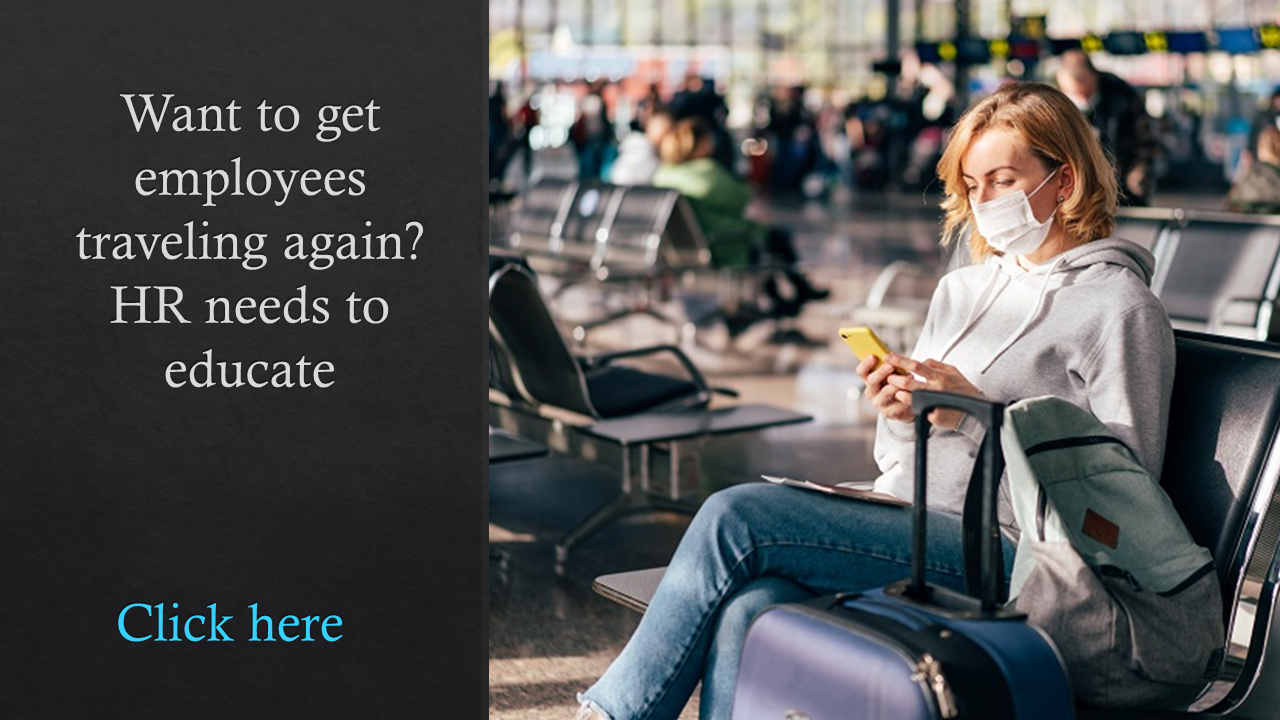As the COVID-19 vaccine rollout continues, offices are welcoming back more employees each day. But not all employees or offices are ready. In fact, many people have differing opinions about vaccinations and the return to the workplace.
For HR leaders, creating an office reopening plan can be daunting. But throw in the growing lack of trust in health officials, along with how quickly misinformation can spread, and it can be quite the headache.

Author Debbie Connelly
To assuage doubts and fears, organizations need to give their employees a voice, prioritize their health and safety and have solutions in place to communicate information easily so that employees are supported throughout the process—and excited to come back.
The growth of distrust and misinformation
The latest research from Hyland shows that 26% have no trust or are neutral in their trust in healthcare professionals regarding COVID-19 information. And 1 in 4 consider social media their top source of information, which can easily lead to the spread of misinformation. A lot has changed within workplace dynamics since March 2020 and tensions will be high as the world gradually reopens and coworkers come together once again.
Employees likely won’t share the same views on health and safety—especially when it comes to vaccines. With vaccinations helping many people feel more comfortable about the return to work, what happens when coworkers don’t get vaccinated but still want to work in person? How do HR professionals navigate the tricky situation of making everyone feel safe and comfortable while respecting individual voices and concerns?
HR professionals have to juggle a variety of opinions and preferences while still finding a middle ground, but there are still ways to put the right procedures in place so that employees feel safe returning to work.
4 steps for a safe and smooth return to the office
The return to work can be stressful, as every employee will have different thoughts and preferences on when—or if ever—they’d like to work in an office again. But if you prioritize giving your employees a voice and follow these steps, you can make everyone feel safe and heard.
Related: A $30K raise or remote work forever? Employees want remote
- Survey and evaluate your employees
Sending out a survey to gauge your employees’ comfort levels about working in the office again is a great starting point. Take an individual approach by removing employee names and instead evaluating responses based on roles. Start at the top of your organization and evaluate from the C-suite down to determine if it’s essential for the people in those positions to be in person at the office full time, part-time or if they can continue working remotely.
By surveying individuals by role/position, you and your leadership team can determine which workers—if any—absolutely need to be back in the office and how frequently. Offering hybrid and flexible work-from-home options shows your employees that you’re listening to their concerns. You can also use this information to create plans to slowly phase workers back into the office—making sure they’re comfortable with it and you’re following local public health guidelines. Consider investing in digital solutions that can manage your company guidelines and documentation, and make it easily accessible across your organization. This is especially important for companies with remote employees because it allows for flexibility and ensures everyone is on the same page.
2. Reimagine your office space.
Prior to the pandemic, you may have had multiple employees sharing the same cubicle area or an open office floor plan. However, with social distancing, many office environments will need some adjusting before employees return to work. Get creative with your space and rearrange your setup to make everyone feel safe and comfortable working in the same environment.
For example, you can create a new socially distanced area where workers can safely collaborate together. Perhaps you need to buy more whiteboards and space them out so everyone who needs to use one can. Or maybe your office has access to an outdoor space that wasn’t utilized previously; now is the perfect time to consider giving your employees outdoor working options. Improving your office space is a great opportunity to incentivize your employees and make them excited about coming back.
3. Reevaluate your culture and how it works for remote employees.
Culture is a big draw for many employees—with many choosing one company over another because of the selected employer’s culture—and it’s an important way to retain your workforce. Before the pandemic, it was easy to offer activities and perks like happy hours and office snacks as a way to keep employees engaged. But with social distancing and remote work, your teams will likely have employees who are remote full-time or infrequently in the office. The big question is, how do you engage your employees in new hybrid work environments?
Luckily, a variety of digital solutions can keep coworkers connected and in communication—regardless of location. These tools can also be used to disperse information so employees have access to all the knowledge they need to do their jobs effectively, in the office or at home. Whether you offer incentives that encourage employees to come back into the office or new remote opportunities that provide an engaging experience, consider how to help your organization’s culture thrive and retain employees.
4. Offer support and transparency.
The past year has been a hard time for everyone and the return to the office can be intimidating after months of remote work. Employees may have concerns about what their health insurance will look like post-pandemic—and if COVID-19 testing will continue to be covered. If it’s not and they’re unvaccinated, they may decide they can’t afford to get tested for COVID-19—putting your other employees at risk as well.
 Make sure your employees understand exactly how their benefits work and be transparent with them about your policies. Implement digital solutions to manage this content and keep this information consistent, up to date and readily available. Employee resource groups (ERGs) are also a great way to offer support to your employees as they transition back to the office. ERGs can provide a safe space to discuss employee concerns on specific topics and serve as a place for leadership to be looped in as needed to address issues that may impact certain employees more greatly than others. In fact, 85% of working women said that joining an ERG benefitted them and their careers. By providing support along with spaces for your employees to be heard and transparency about your benefits, you can help your employees feel comfortable and confident with the return to work.
Make sure your employees understand exactly how their benefits work and be transparent with them about your policies. Implement digital solutions to manage this content and keep this information consistent, up to date and readily available. Employee resource groups (ERGs) are also a great way to offer support to your employees as they transition back to the office. ERGs can provide a safe space to discuss employee concerns on specific topics and serve as a place for leadership to be looped in as needed to address issues that may impact certain employees more greatly than others. In fact, 85% of working women said that joining an ERG benefitted them and their careers. By providing support along with spaces for your employees to be heard and transparency about your benefits, you can help your employees feel comfortable and confident with the return to work.
Sustaining a safe work environment for all employees
One of the biggest priorities HR executives have in hybrid work environments is ensuring that employees feel safe and comfortable enough to come back into the office. During this transition, it’s critical to continue following local public health guidelines and actively work to make your office a safe place to work in. By surveying each individual role in your organization, reorganizing your office space, amping up your culture and being transparent in your decision-making, you can help your employees feel supported—even when distrust in information is high.